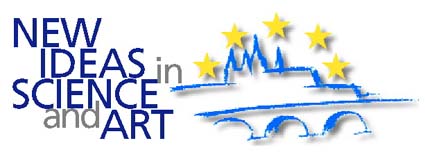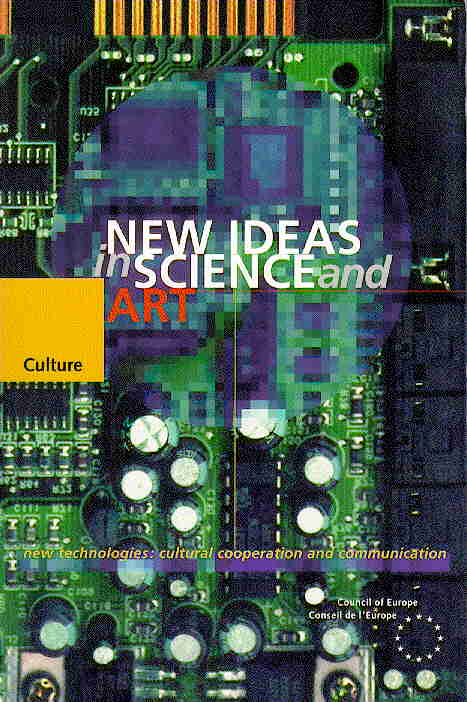Conference on A New Space for Culture and
Society


See below final text as published in:
http://heri.cicv.fr/council/
or
see: Agenda
http://heri.cicv.fr/council/agenda.html
see: Contribution Friday 2:30pm
A
Paradigm Shift? Orchestrating Representations Like Knowledge Trees and Knowledge Spaces
http://heri.cicv.fr/council/speeches/benkingtxt.html
Autor:
http://heri.cicv.fr/council/participants/benking.html
A Metaparadigm or Sharable Framework (Cognitive Panorama)
Objective: To counteract Cyberculture's anticipated impact due to its 1.) 'open- ended' universality, 2.) loss of meaning, and 3.) loss of context, impact, as reflected in the metaphor of the 'Second Flood' (LÚvy 1996), the proposal of a 'Cognitive Panorama' allows us to embody and map concepts in their context and develop 'common frames of reference'.
The proposed Conceptual Superstructure defines and identifies topics as logical places, displays relations, and connections within this topics or issues, and helps us in this way to locate and become aware of 1.) what we know and miss, 2.) where we are and what we think, and 3.) where we mis-, under-use or manipulate information. By avoiding a 'flat' chaotic mess of data which leads to the known 'lost- in-space' syndrome, we actually define cognitive spaces, making use of the known orientational and organisational benefits. Through reflection on conceptual positions, outlining and embodying situations or topics (logical places or containers), we can follow meaning into embodied context and semantic spaces and also scrutinise abstract 'realities' by exploring participatory and collaboratory approaches.
The search for a framework of co-existence: Most central to our perception and thinking is the self-model, meta-paradigm or 'framework of being'; most common is the dualism of 'ego' versus 'eco', the idea of 'I or not I' or 'inside or outside'. The perceived distance to objects or subjects thus creates the paradigm (framework of thinking). The moment we select, merge and 'morph' view-points, we assume mental mobility/locomotion and are no longer subject to certain unconscious mind-sets or constructed experiences. By treating situation spaces like physical spaces and places we can see behind our thought and conceptual schemes which rule our language and logic. By creating such 'extra' views we have a framework jointly to evaluate positions, situations, proportions and consequences. To rephrase the theme of this conference, these are indeed embodied 'NEW & COMMON SPACES' for individuals, culture and society, which we call a 'Cognitive Panorama' (3Space/Time) , a realm to orient frameworks of thinking (paradigms). The design of a coherent, simple, complete schema, which is easy to remember, is based on 'space-scapes' Thematic 'land'scapes or scaffoldings which reflect deep structured orders, and can be approached as we would explore the physical with different 'lenses' The combination of three adjacent 'containers' or physical, contextual, and semantic 'rooms' (3Space/Time), allows us to bridge objects and subject. The resulting spacially structured common searchable global index applies to any language or domain and can be seen as a switchboard or transformer. This may very well be a first step towards the much acclaimed next phylogenetic step of interpersonal exchange and agreement about issues. Through imagination we can make use of the assimilation potential of visual access, and ignite creativity by transforming and transporting (core) knowledge along and across scales. As we need some common framework and understanding for the recently inaugurated Multi-Lingual Information Society (MLIS), a paradigm shift toward simplicity can be envisioned in the resonance between coexisting representations (such as knowledge -trees, - spaces, or -spirals) and the resulting tolerance when becoming aware of the fixation of being left alone with only one model, angle, or 'eye'
'Changing Visions': This book, with the sub-title: Human Cognitive Maps - Past, Present, and Future', (Laszlo, Artigiani, et al.) is basic to understanding the idea of combining new and old visions. A central switch or translator for multi- sensorial/medial information and combined references and representations was previously postulated by Michael Gazzaniga as a central function of the brain, and it can be seen also as 'anticipatory schemata' (Neisser 1976). 'Changing Visions' elaborates such a top-down approach to patterns of information. By matching patterns we can share creative thinking in 'image schemas', as George Lakoff called metaphors, as we can mentally navigate and visit items (lateral or diagonal thinking). 'Changing Visions' is recommended not only as a Primer, but also to help realise the potentials of evolutionary cognitive maps.
The basic benefits of natural-science-based evolutionary cognitive maps,
as summarised in 'The New Evolutionary Paradigm' (Loye 1990) are: 1.) improved
forecasting, 2.) improved interventional guides, 3.) participatory rather than
authoritarian problem-solving, and 4.) providing clearer long-term goals and humanistic
images. To address such wide objectives it was necessary to test and apply the above
schema in fields ranging from education and knowledge organisation, to ethics and
governance. Combining bird's eye and worm's eye views is definitely a bigger picture. It
allows us to see and share much clearer positions and responsibilities, be co-creative,
and last, but not least, to be more humble, the more we gaze and learn to talk about 'how
little we know'.